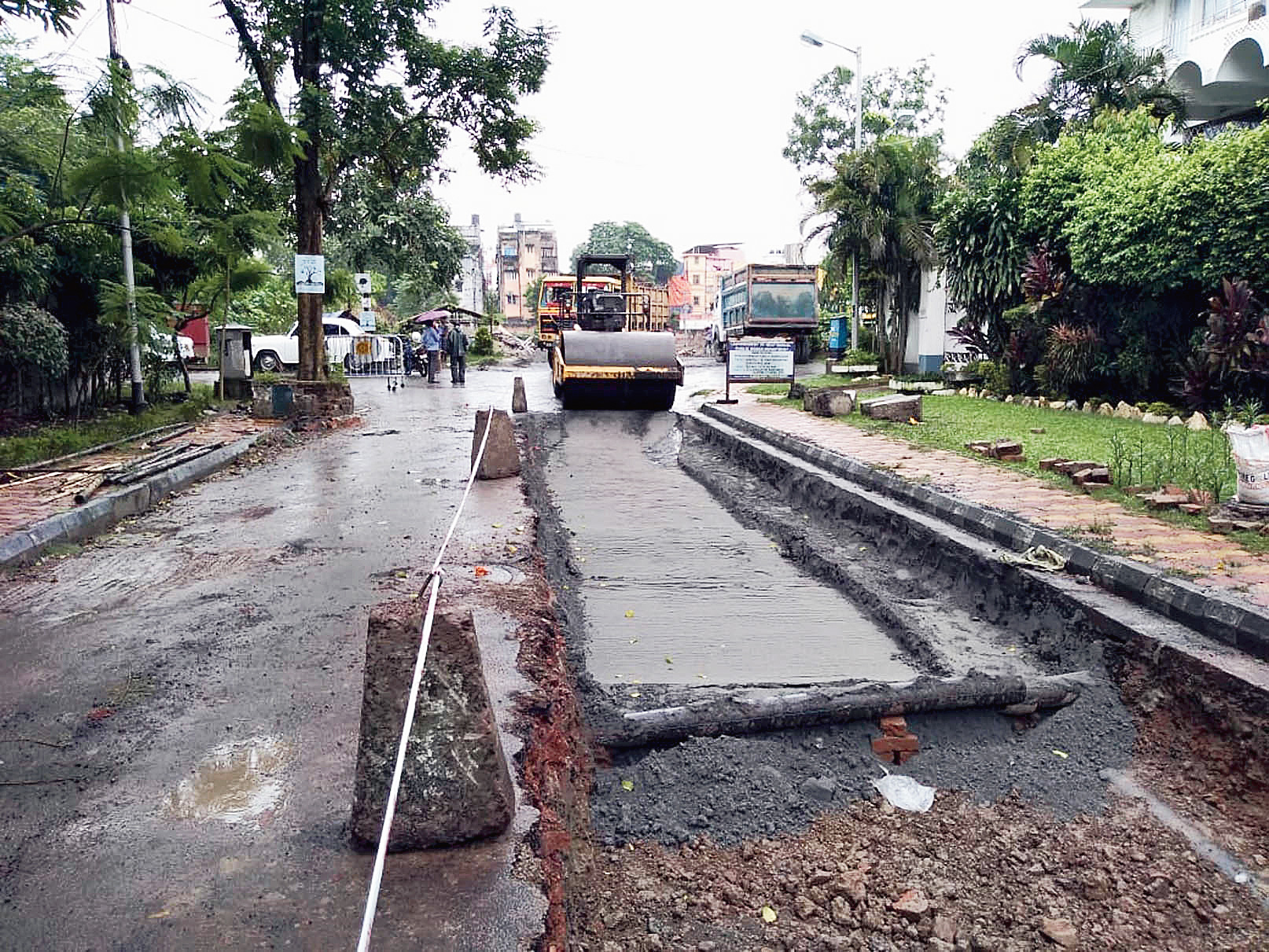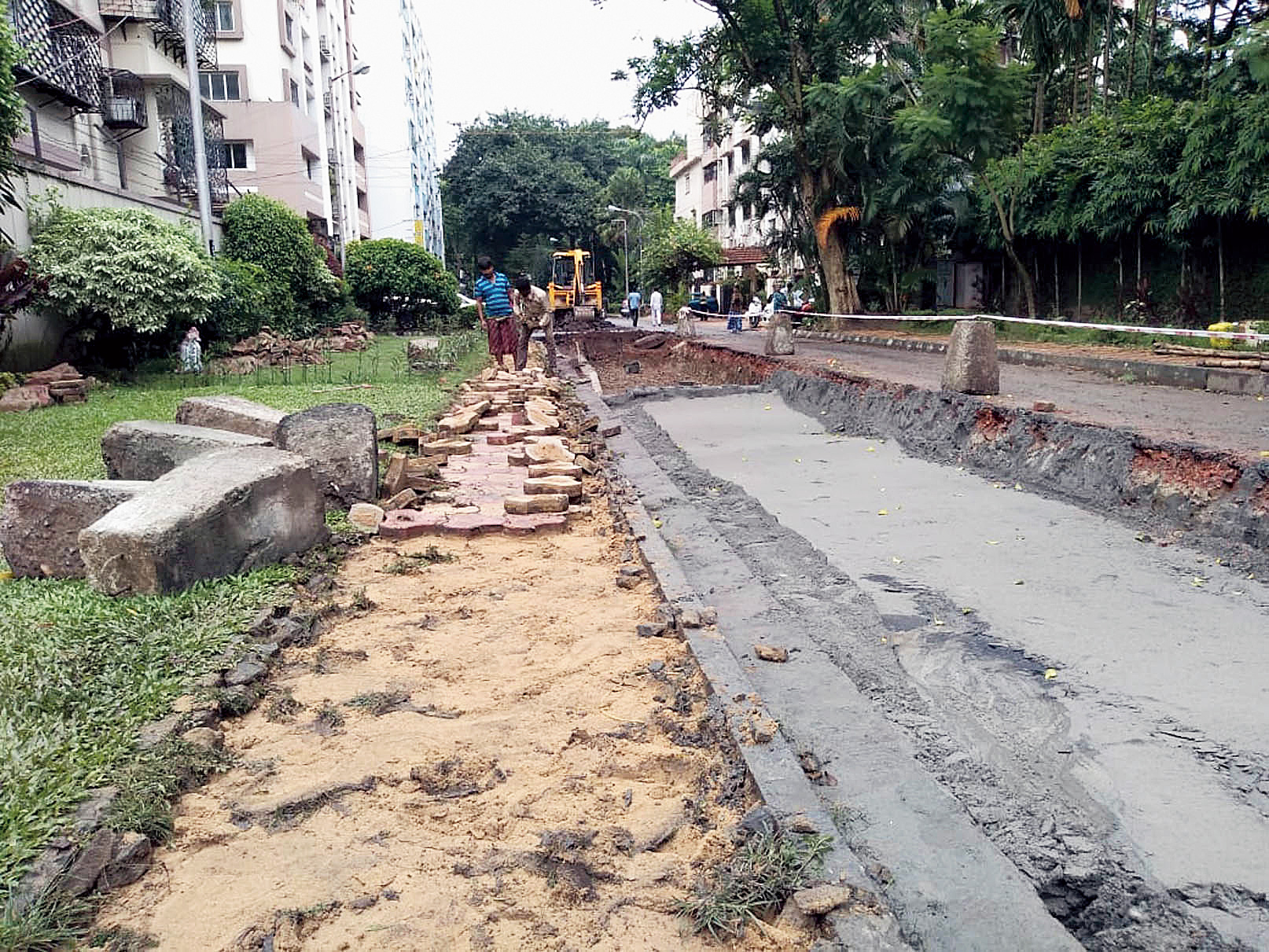Alipore Avenue, maintained by the Calcutta Municipal Corporation, has been found to be less durable than required to bear the traffic load of Majerhat.
PWD workers have started digging up the road to make a concrete base before relaying the surface with a thicker layer of bitumen.
Engineers have done away with the usual practice of adding a layer of bitumen over the existing surface. Instead, the entire road will be done afresh.
On Friday, engineers dug up a portion of the road and found the present thickness of bitumen to be 300mm.
It has been decided that the thickness would be raised to 850mm with layers of sand and broken brick pieces for thorough compaction.
The PWD will strengthen the 500m existing road on the other side of the railway tracks in New Alipore’s G Block.
A report by IIT Bombay has pointed out how adding multiple layers of bitumen over the years contributed to the collapse of the Majerhat bridge. A five-inch bitumen layer became almost 16 inches over 50 years, according to the report.
Once the new road is ready, vehicles coming down Humayun Kabir Sarani from New Alipore will use this relaid stretch.
“We will not stop at Humayun Kabir Sarani but move further south and strengthen the entire stretch that goes up to Nalini Ranjan Avenue (popularly known as New Alipore Road),” a PWD engineer said.
“This stretch will have a 830mm-thick layer of asphalt. In case there is an emergency and traffic needs to be diverted, the adjoining roads should be strong enough to bear the vehicular load.”
The roads will be relaid with a dense grade bitumen mix that will have stone aggregates and coarse sand as binding material, the engineer said.
This type is used for bituminous concrete roads. In bituminous macadam roads, the binding material is only stone aggregate.
On Friday, engineers dug parts of the road to identify the underground utilities for relocation. Once that is done, the work of strengthening the base with layers of sand and bitumen will start.
Some of the focus areas are:
Footpath
At Alipore, the existing road width is seven metres. But engineers have decided to carve out another metre from the existing footpath to increase the road width.
Since each of the Bailey bridges will be 4.5m wide, vehicles will have to pass through a cramped space.
Once they reach Alipore, a wider road space will ensure faster dispersal down Alipore Avenue.
Bailey bridge piling
Twenty-four piles will be built with a pile cap on each to hold the two bridges over the Chetla canal adjoining the tracks at Majerhat.
The canal moves further east to merge with the Tolly’s nullah. Contractors started the piling work on the banks of the canal using huge rigs on Friday.
“Each of the piles will be 28 metres long and one metre wide,” Sushanta Debnath of Geo Piling Solutions, the company that has been engaged for the job, said.
“We will use the direct mud circulation technology where water will be used to loosen the soil and mud and then pumped out,” Debnath said.
Road expansion
A part of the thicket and wild outgrowths at the Alipore-end were removed on Friday to make space for the additional road width.

A dug-up stretch of Alipore Avenue. Utilities such as cables have to be relocated for the construction. Kinsuk Basu

A part of the footpath along Alipore Avenue that is being carved out to widen the road by a metre. The dug-up portion has a mere 300mm layer (circled) of bitumen that will now be increased to 850mm Kinsuk Basu

A bamboo shed for workers adjoining the Chetla canal. Lights are to be installed in this area so that work can continue round-the-clock Kinsuk Basu











